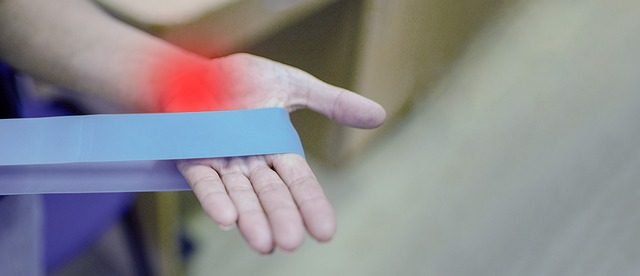Non-surgical pain management using regenerative medicine like PRP and stem cell therapy offers a promising, holistic alternative to surgery or medication for chronic pain relief, leveraging the body's natural healing mechanisms for long-term success.
Chronic pain affects millions globally, impacting quality of life. Traditional treatments often offer temporary relief, prompting a growing interest in non-surgical alternatives. Regenerative medicine, with its potential to repair and regenerate damaged tissues, emerges as a promising frontier in chronic pain management. This article explores various regenerative therapies, benefits, challenges, and future prospects within the context of non-surgical pain management, shedding light on innovative approaches to alleviate suffering.
Understanding Chronic Pain and Non-Surgical Approaches
Chronic pain is a complex condition that significantly impacts an individual’s quality of life, often persisting for months or even years. Unlike acute pain, which serves as a warning signal, chronic pain continues long after the initial injury or illness has healed. This persistent nature can lead to physical and emotional distress, disability, and reduced overall well-being. Non-surgical pain management is an essential aspect of treating chronic pain, offering alternative solutions to invasive procedures.
One key approach in non-surgical pain management involves regenerative medicine, which harnesses the body’s natural healing processes. Techniques such as platelet-rich plasma (PRP) therapy and mesenchymal stem cell (MSC) transplantation have shown promise in alleviating chronic pain conditions. These methods stimulate tissue repair and regeneration while reducing inflammation, providing a more holistic and long-lasting solution compared to traditional painkillers or surgical interventions.
Regenerative Medicine: A New Frontier for Pain Relief
Regenerative medicine represents a groundbreaking approach to chronic pain relief, offering hope where traditional treatments may fall short. This innovative field leverages the body’s inherent healing capabilities by stimulating the growth of new, healthy cells and tissues. Unlike surgical interventions or pharmaceutical drugs, non-surgical pain management through regenerative medicine provides a minimally invasive path forward. Techniques such as platelet-rich plasma (PRP) therapy and stem cell therapy harness natural components of the body to accelerate healing and reduce inflammation, offering a promising alternative for those seeking long-term relief from chronic pain conditions.
Types of Regenerative Therapies for Chronic Conditions
Regenerative medicine offers a promising approach to chronic pain relief, providing alternatives to traditional surgical interventions. Non-surgical pain management techniques have gained significant attention in recent years due to their minimal invasiveness and potential for tissue repair. These therapies encompass various methods designed to stimulate the body’s inherent regenerative capabilities.
One prominent type is cell therapy, which involves injecting stem cells or specialized cells into the affected area to promote healing. This can include mesenchymal stem cells (MSCs) derived from bone marrow, adipose tissue, or umbilical cord blood, known for their ability to differentiate into various cell types and modulate immune responses. Another emerging approach is tissue engineering, where damaged tissues are regenerated using scaffolds and growth factors to support new cell growth and restore functionality. Additionally, platelet-rich plasma (PRP) therapy has gained popularity, utilizing a patient’s own blood to accelerate healing by delivering high concentrations of growth factors to the treatment site. These non-surgical regenerative therapies present exciting prospects for chronic pain management, offering both safety and efficacy in addressing various conditions without the risks associated with surgery.
Benefits, Challenges, and Future Prospects in Non-Surgical Pain Management
Regenerative medicine offers a promising avenue for chronic pain relief, especially in the realm of non-surgical pain management. One of its key benefits is the potential to eliminate or significantly reduce reliance on opioids and other medications with significant side effects. By stimulating the body’s natural healing processes, regenerative treatments can provide long-lasting pain alleviation without the risks associated with invasive procedures. These methods, such as platelet-rich plasma (PRP) therapy and stem cell therapies, are gaining traction due to their minimal invasiveness and ability to regenerate damaged tissues.
Despite these advantages, challenges remain in non-surgical pain management. The effectiveness of regenerative treatments can vary among patients, influenced by factors like overall health, the chronicity of pain, and the specific condition causing it. Additionally, ensuring consistent access to high-quality, standardized treatments is an obstacle that requires further research and development. However, ongoing advancements hold promise for the future. Continued exploration in regenerative medicine could lead to personalized, targeted therapies, making non-surgical pain management a more effective and widely accessible option for patients worldwide.
Regenerative medicine offers a promising non-surgical approach to chronic pain relief, providing potential alternatives to conventional treatments. The various regenerative therapies discussed have shown encouraging results in managing specific chronic conditions. While challenges remain, ongoing research and advancements suggest a bright future for non-surgical pain management, offering hope for improved quality of life for those suffering from chronic pain. By exploring these innovative treatments, healthcare professionals can navigate the complexities of chronic pain and offer patients effective, long-lasting solutions.
